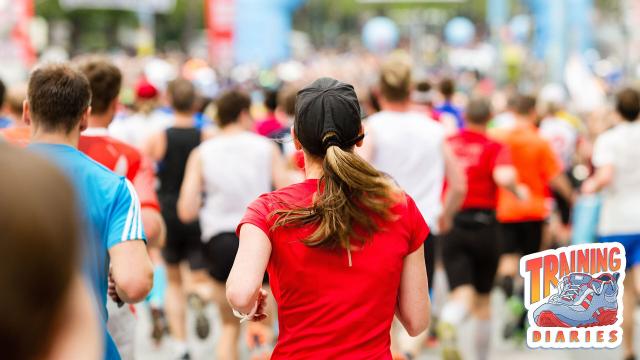Welcome to Training Diaries, a Lifehacker series about my journey to the 2023 TCS New York City Marathon. This series will cover all the ups, downs, and hill repeats on my journey to the biggest marathon in the world. Leading up to race day on Sunday, November 5, I’ll go over proper fueling, injuries and setbacks, treadmill tips, wardrobe malfunctions, long run logic, and just generally reflect on what it takes to cross a marathon finish line. I’m guided by a mantra both corny and true: A marathon is actually hundreds of miles; race day just happens to be the last 26 or so.
There’s a reason for the saying, “It’s not a sprint; it’s a marathon.” Now, I understand the desire to try and sprint a marathon. When I began training for my first marathon in 2019, I was resistant to the idea that the majority of my mileage—at least 80 per cent, apparently—should be run at an easy, conversational pace. Shouldn’t I be pushing myself to run fast, in order to prepare for a marathon? Instead, I learned pretty quickly that first-time long runs are only possible when you slow your pace way down.
For me, running slow is the secret to the meditative appeal of “zoning out.” Slowing down allows me to pay attention to my breathing, enjoy my surroundings, and fuel up as needed with snacks and water. Most importantly, greater distances become achievable only when you remove speed as your primary focus.
A number of friends have joined me on a run during this marathon training cycle. They expect me to control the pace; what they don’t expect is for me to slow them the hell down. I believe the reason so many people claim to hate running is because what they’re actually doing is sprinting. This dooms them to tire out sooner than they’d like—convincing them that they can’t run long distances, and confirming their assumption that “running isn’t for them.” Enter: The beauty of easy running.
I’m partial to this topic. One of my first posts at Lifehacker was all about how you need to run slower to run faster. And it’s a skill that takes time to learn! Running slow can be frustrating. I was chatting with a friend who is also running New York with me in November. This will be her first marathon, and she informed me that she’s ignoring any and all guidance to run slow because she “gets too bored.” Hearing this, I cringed.
Then again, I get it. Going for a long run can be daunting, especially when you’re training for a big race like a marathon. It’s tempting to want to speed up and finish the miles as quickly as possible. However, keeping a slow, steady pace during your long runs is the secret to getting the most out of them and setting yourself up for success on race day.
Why you need to run slower
Just like cruise control in a car helps reduce fatigue for drivers, my ultimate running hack is learning how to enter a personal state of cruise control. Here’s why you should rein in your speed on those weekend long runs.
Prevents injury
Long runs put a lot of stress on your body if you push the pace. Going too fast too soon increases your risk of repetitive stress injuries like shin splints, stress fractures, IT band syndrome, and plantar fasciitis. Sticking to a slower pace gives your body time to adapt to the mileage and reduces injury risk.
Builds endurance
Long slow runs train your body to burn fat as fuel and withstand many miles. Pushing yourself to run fast tires you out more quickly: keeping an easy, conversational pace allows you to go farther and build essential endurance. Those long miles at a slower pace get your body comfortable with being on its feet for hours.
Improves recovery
Easy long runs shouldn’t wipe you out. In fact, running long at a slow pace improves your ability to recover versus fast-paced long runs which prolong muscle fatigue. Take it slow and you’ll bounce back quicker for your next tough workout.
Aids mental toughness
Long slow runs also train your mind to stay focused for miles on end. Learning to maintain pace for such a long time period boosts mental stamina. This mental toughness will serve you well late in a marathon when your body starts to tire. Running the Brooklyn Marathon last year, the only time I passed other runners was going up a brutal hill all of mile 24. And I passed a lot of people.
Now, I’ve been reading about race day strategy for the NYC specifically. One tip that applies to all races, but applies to the NYC marathon more than most races: Go slow. From the adrenaline of crowds cheering, to the pressure from over 40,000 fellow runners, it’s tough not to accidentally speed up. But going too fast right out of the gate will screw you over by mile 20. So I’m practicing my cruise control, so that I’ll be able to avoid burning out and set myself up to finish strong.
So embrace the slow on your upcoming long runs. Here are my top hacks for forcing yourself to slow down. For more, these are my mental tricks to make your run less boring.

Leave a Reply
You must be logged in to post a comment.